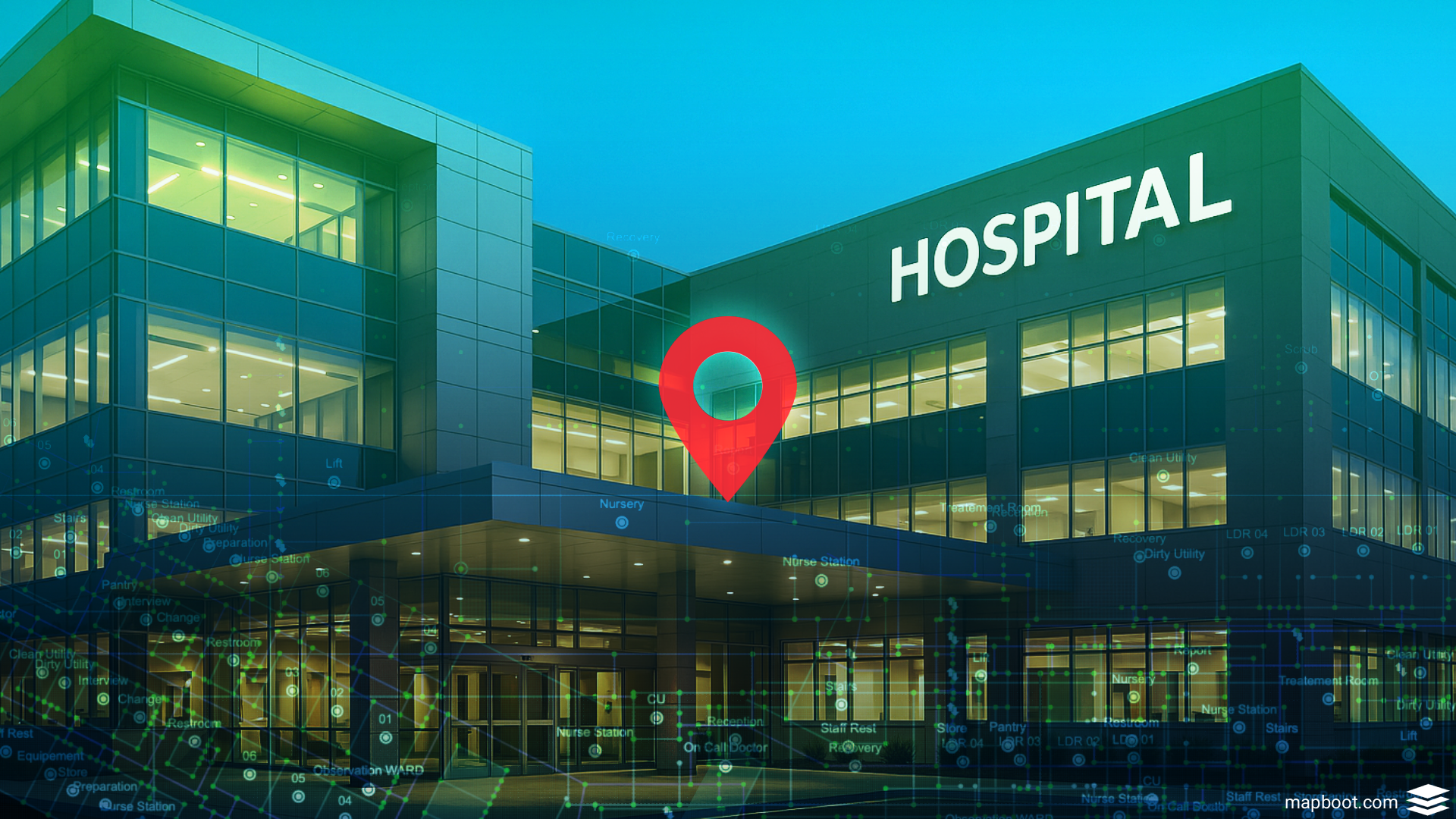Modern hospitals are more than just buildings, they’re sprawling ecosystems of departments, clinics, and services spread across multiple floors and even separate campuses. For patients, visitors, and even staff, navigating these environments can be overwhelming.
Indoor mapping technology helps solve this challenge by transforming static floor plans into interactive, easy-to-use digital maps that improve the hospital experience for everyone.
-
Improved Patient Experience
Patients often arrive at hospitals during stressful times. Getting lost or arriving late to an appointment can increase anxiety. With indoor mapping, patients can:
- Quickly find their way to departments, clinics, or labs.
- Receive step-by-step directions on their smartphone, by simple access to the facility website, app install not even required.
- Spend less time worrying about navigation and more time focused on care.
-
Increased Staff Efficiency
Hospital staff are constantly on the move. Indoor maps save valuable time by helping staff:
- Locate equipment, rooms, or service areas faster.
- Guide patients without leaving their duties.
- Reduce unnecessary delays caused by misdirection.
-
Accessibility for All Visitors
Large healthcare facilities must be accessible to everyone. Indoor mapping supports inclusivity by:
- Highlighting elevators, ramps, and accessible routes.
- Helping visually impaired visitors with simplified map layers.
- Offering multiple language options for diverse communities.
-
Reduced Missed Appointments
Missed or delayed appointments cost healthcare providers time and revenue. Indoor navigation minimizes this by:
- Guiding patients directly from entrance to destination.
- Ensuring patients arrive at the right place, on time.
-
Multi-Building & Campus Navigation
Many hospitals extend across multiple connected buildings. Indoor mapping allows:
- Seamless transitions between wings, clinics, and campuses.
- Skybridge and outdoor route support.
- A unified navigation system for the entire healthcare network.
-
Data-Driven Insights
Indoor navigation platforms don’t just guide people, they also provide analytics. Hospitals can use this data to:
- Identify high-traffic areas.
- Optimize facility layouts.
- Improve signage and service placement based on real usage.
Conclusion
Indoor mapping is no longer just a convenience, it’s becoming essential in modern healthcare environments. By improving patient experience, boosting staff efficiency, and ensuring accessibility, hospitals can deliver better care while reducing operational costs.
👉 Learn more about our Indoor Navigation Solution for Large Hospitals and how it can transform your facility.
